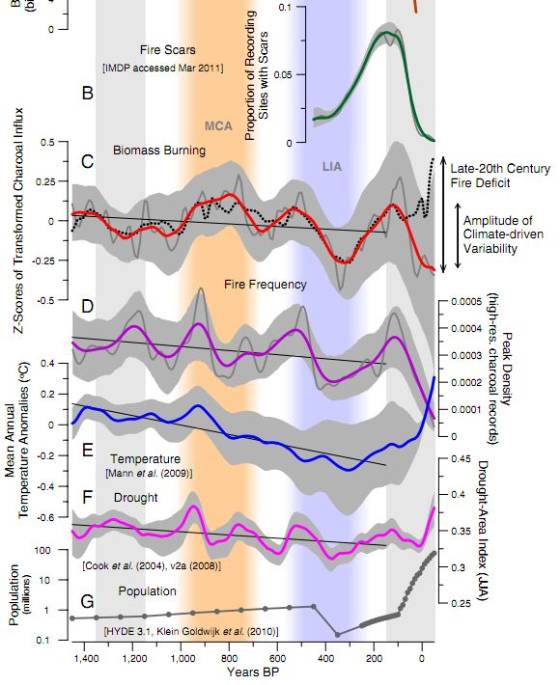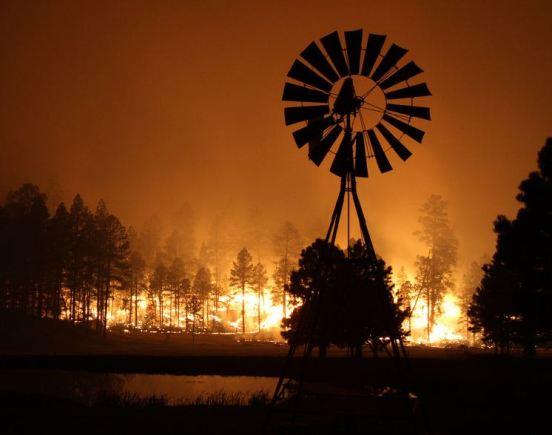Researchers have determined that we have a “fire deficit” in the western United States. Since the late 1800s, they say, human activities, grazing, climate change, and fire suppression caused a large, abrupt decline in burning similar to the Little Ice Age (which was between 1400 and 1700), leading to a buildup of fuel, or biomass. Large fires in the late 20th and 21st century have begun to address the fire deficit, but it is continuing to grow.
We owe the ecosystem some fire, and the debt collector has come to visit.
Their key findings:
- Comparing charcoal records and climate data, as expected, showed warm, dry intervals, such as the “Medieval Climate Anomaly” between 1,000 and 700 years ago, which had more burning, and cool, moist intervals, such as the “Little Ice Age” between 500 and 300 years ago, had fewer fires. Short-term peaks in fires were associated with abrupt climate changes — warming or cooling.
- Wildfires during most of the 20th century were almost as infrequent as they were during the Little Ice Age, about 400 years ago. However, only a century ago, fires were as frequent as they were about 800 years ago, during the warm and dry Medieval Climate Anomaly. “In other words, humans caused fires to shift from their 1,000-year maximum to their 1,000-year minimum in less than 100 years,” Gavin said.
- Climate and humans acted synergistically — by the end of the 18th century and early 19th century — to increase fire events that were often sparked by agricultural practices, clearing of forests, logging activity and railroading.
The authors of the paper, especially lead author Jennifer R. Marlon, are to be commended for publishing this as Open Access, which means that the results from this taxpayer funded research are freely available to the people who paid for it (unlike other research by the U.S. Forest Service that we wrote about earlier today).
The figure below made my head hurt as I figured it out, never having seen anything like this. It is a portion of a chart in the referenced paper.

The paper, titled Long-term perspective on wildfires in the western United States can be found HERE, and a summary is HERE. The authors are Jennifer R. Marlon, Patrick J. Bartlein, Daniel G. Gavin, Colin J. Long, R. Scott Anderson, Christy E. Briles, Kendrick J. Brown, Daniele Colombaroli, Douglas J. Hallett, Mitchell J. Power, Elizabeth A. Scharf, and Megan K. Walsh.
Thanks go out to Dick








